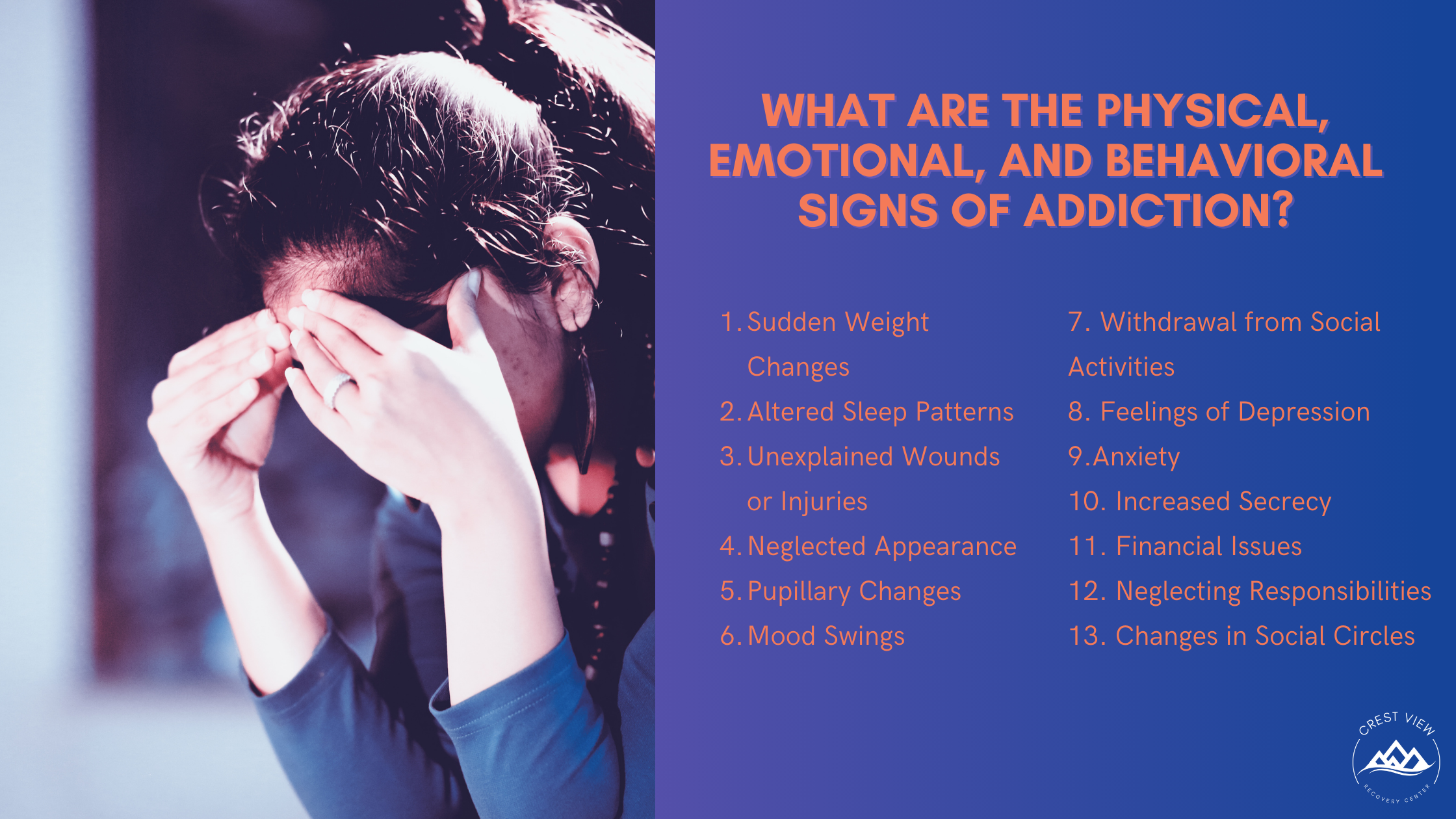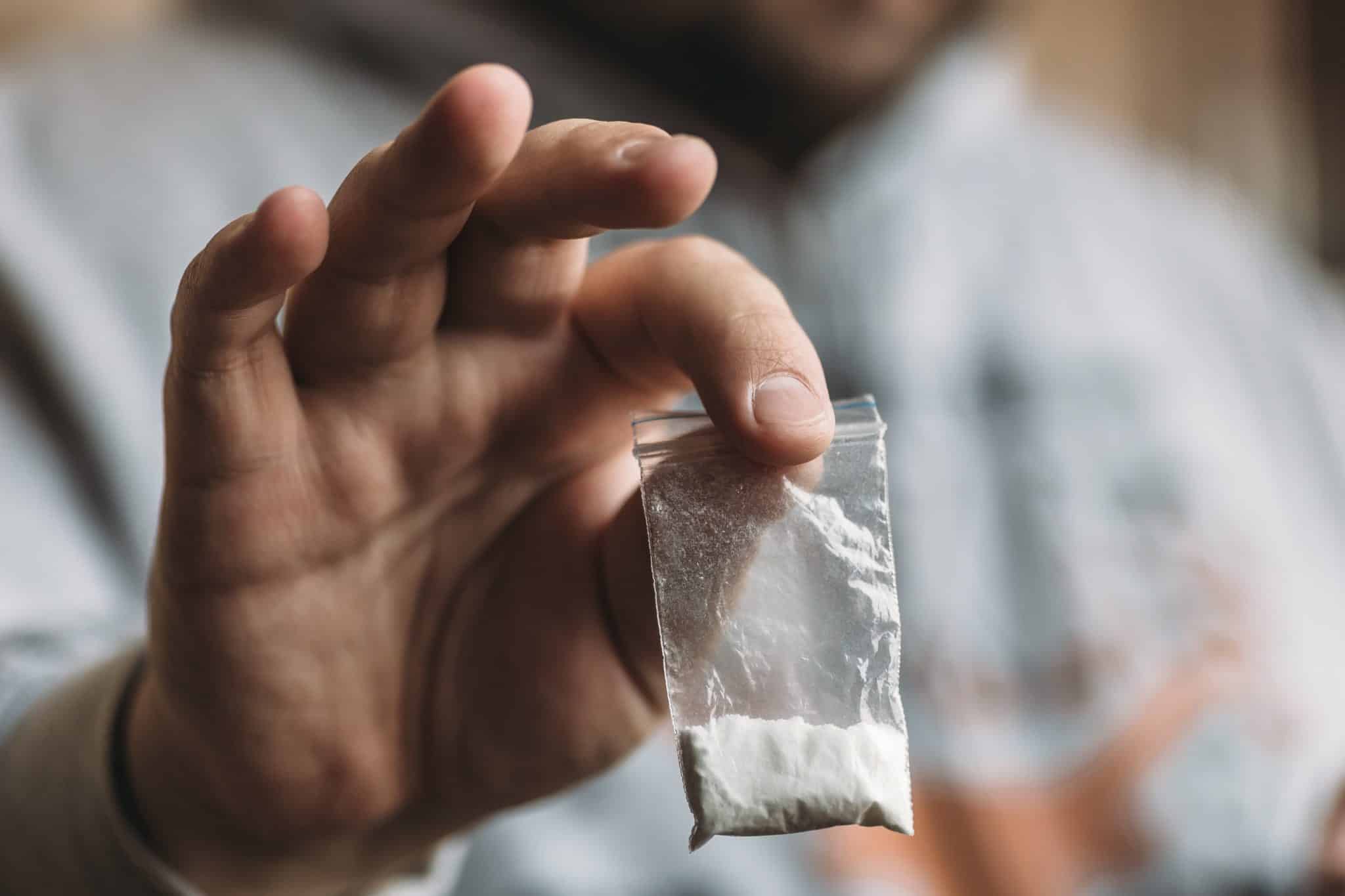Addiction is a complex and often misunderstood condition that impacts every facet of a person’s life, from their physical well-being to their emotional stability and behavioral patterns.
In this article, “The Physical, Emotional, and Behavioral Signs of Addiction,” we aim to shed light on these various dimensions of addiction. We will explore the wide range of signs and symptoms that may indicate a struggle with substance use or addictive behaviors.
Our goal is to provide a comprehensive guide to help you identify potential issues in yourself or loved ones, ultimately fostering understanding, and prompting timely intervention.
By being aware of these signs, we can better support those grappling with addiction, helping them navigate toward recovery.
Understanding Addiction
Addiction is a chronic, often relapsing brain disease characterized by compulsive substance use or behavior despite harmful consequences. It alters the brain’s structure and function, leading to changes that persist long after the addictive substance or behavior has been stopped.
Various factors, including genetics, environment, and psychological influences, contribute to its development. Genetic predisposition can make individuals more susceptible, while environmental factors like peer pressure or stress can trigger addictive behaviors.
Psychological factors, such as mental health disorders, trauma, or a lack of coping skills, can also play a significant role.
Physical Signs of Addiction
The physical manifestation of addiction can often be the most visible and telling sign that a problem exists.
1. Sudden Weight Changes
One of the most common physical symptoms of addiction is unexpected weight changes. Depending on the substance, individuals may experience rapid weight loss or gain.
Stimulants such as cocaine or methamphetamines often suppress appetite, leading to weight loss. Conversely, substances like alcohol or certain opioids can cause weight gain due to increased cravings or slowed metabolism.
2. Altered Sleep Patterns
Changes in sleep patterns are another tell-tale sign of addiction. Some substances can cause insomnia or disturbed sleep, while others may lead to excessive sleepiness.
For instance, stimulants can cause prolonged periods of wakefulness, followed by crash periods of excessive sleep. On the other hand, depressants like alcohol can disrupt the sleep cycle, causing non-restful sleep.
3. Unexplained Wounds or Injuries
Addiction can also manifest as unexplained injuries or wounds. This is particularly common with intravenous drug use, which can lead to needle marks, abscesses, or infections.
Furthermore, the impaired coordination and judgment associated with many substances can lead to accidents and injuries.
4. Neglected Appearance
Neglecting personal appearance and hygiene is another common physical sign of addiction.
As addiction progresses, individuals may lose interest in their looks, neglecting basic grooming habits and wearing the same clothes for days.
5. Pupillary Changes
Lastly, changes in pupil size can indicate substance use. Certain drugs can cause pupils to dilate or constrict, and prolonged substance use may lead to bloodshot or glassy eyes.
Recognizing these physical signs is crucial in identifying a possible addiction, prompting intervention and addiction treatment.
Emotional Signs of Addiction
Understanding the emotional manifestations of addiction is crucial, as these signs often provide insight into the depth and severity of the problem.
1. Mood Swings
One of the most prevalent emotional signs of addiction is the occurrence of mood swings.
The brain’s chemical balance can be significantly altered by substance use, leading to unpredictable and erratic changes in mood.
Individuals may experience periods of euphoria or heightened energy after using a substance, only to shift rapidly into states of irritability, aggression, or depression as the effects wane.
2. Withdrawal from Social Activities
A noticeable withdrawal from social activities is another common sign of addiction. This can manifest as increased isolation, with individuals avoiding friends, family, and events they once enjoyed.
This withdrawal often stems from a desire to conceal substance use, feelings of shame or guilt, or simply because the addiction has become so consuming that it eclipses other aspects of life.
3. Feelings of Depression
Depression is frequently intertwined with addiction. The temporary highs provided by substance use are typically followed by profound lows, which can evolve into persistent feelings of sadness, hopelessness, or a lack of interest in previously enjoyed activities.
The negative consequences of addiction, such as damaged relationships or job loss, can further exacerbate these feelings of depression.
4. Anxiety
Increased anxiety is also commonly associated with addiction. This can be a direct side effect of the substance itself, a symptom of withdrawal, or a result of the constant stress and worry brought on by managing the addiction.
Over time, this heightened state of anxiety can become chronic and potentially develop into an anxiety disorder.
It is critical to recognize these emotional signs to fully comprehend the impact of addiction and to ensure the provision of a comprehensive treatment plan.
Behavioral Signs of Addiction
Addiction often brings about significant changes in an individual’s behavior, which can serve as critical indicators of a developing or existing problem.
1. Increased Secrecy
A common behavioral change in individuals struggling with addiction is increased secrecy.
This might involve being vague about their whereabouts, concealing what they do in their free time, or becoming defensive when asked about these things. This behavior is typically driven by the desire to hide their substance use from others.
2. Financial Issues
Financial problems are another telltale sign of addiction. Individuals may struggle with money due to spending significant amounts on obtaining their substance of choice.
They may borrow money frequently, have unexplained financial losses, or even steal to support their habit.
3. Neglecting Responsibilities
People with a substance use disorder often start neglecting their responsibilities. This could occur in various aspects of life, such as failing to fulfill work duties, disregarding household chores, or ignoring academic assignments.
The obsession with obtaining and using the substance takes precedence over these responsibilities.
4. Changes in Social Circles
Another typical behavioral change is a shift in social circles. Individuals who have a substance use disorder often gravitate towards friends who also use substances, abandoning old friends who don’t.
This change can further enable their addiction and isolate them from those who might encourage them to seek help.
Recognizing these behavioral signs is vital in identifying addiction and facilitating timely intervention.
Get Professional Addiction Treatment Near You
Seeking professional help for addiction is crucial to overcoming this complex, multifaceted issue.
Crest View Recovery Center in Asheville, NC offers structured treatment programs that address the physical, emotional, and psychological aspects of addiction. Don’t wait another day to start your journey towards recovery.
Call (866) 986-1371 or fill out our contact form to book your appointment.






